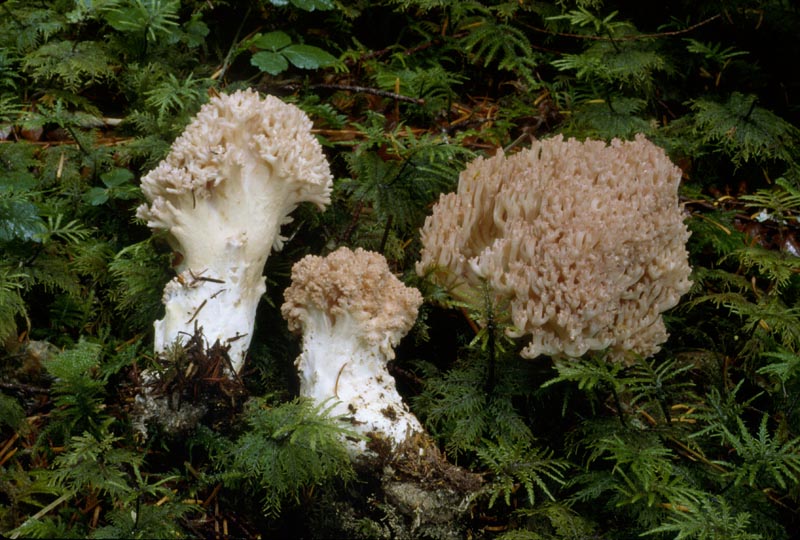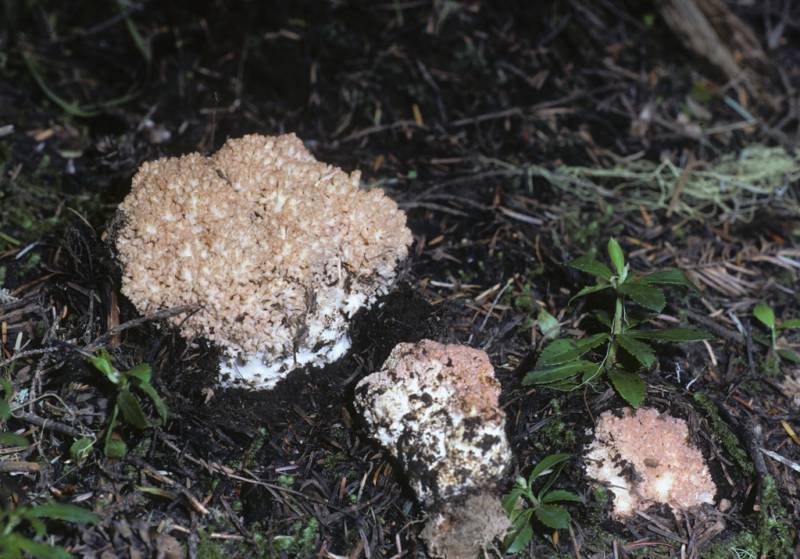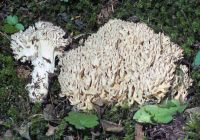Conservation Status: Not of concern
Edibility: The large size of all these species make them attractive as edibles but, as is common with ramarias, they have a laxative effect on some people, so proceed with caution and moderation if you choose to sample them.
The large size of all these species make them attractive as edibles but, as is common with ramarias, they have a laxative effect on some people, so proceed with caution and moderation if you choose to sample them.
Ramaria rubrievanescens and R. rubripermanens are two medium to large, often bulky, whitish corals with coral pink to pinkish red branch tips. One way to sometimes tell them apart is to check the calendar; R. rubripermanens fruits in spring and fall, R. rubrievanescens in fall only. In addition, the tips of R. rubripermanens retain their color, whereas those of R. rubrievanscens fade rapidly and its stipe often is brown-bruised and dingy looking, making identification of older fruitbodies difficult. The spore sizes overlap (10.5--13.5 x 4--5.5 µm in R. rubrievanescens and 8--15.5 x 3.5--5 µm in R. rubripermanens), so often they are not particularly informative. However, spore size is useful in separating these two species from the very similar R. botrytis, which has larger spores (11--17 x 4--6 µm) and fruits in fall.
PNW Herbaria: Specimen records of Ramaria rubrievanescens in the Consortium of Pacific Northwest Herbaria database
CalPhotos: Ramaria rubrievanescens photos






